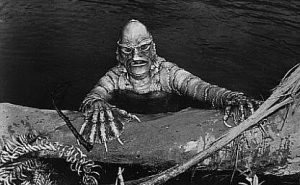
Great Public Hearing last night in Rehoboth on the six permits still needed for a proposed outfall pipe to operate. An overwhelming majority of people spoke to against the permits for the pipe, with only a handful of people in favor. This pipe would also needs a separate Army Corps permit to be constructed.
Here are four things we need you to do in order:
1) Call Governor-elect John Carney. This pipe would be built on his watch so he now has a voice in this fight. He is still a sitting Congressman so reach him at this Congressional offices in Georgetown 320-854-0667. Or in his Wilmington Office 302-691-7333. See Talking Points below first.
2) Send the Governor-elect a message - through his transition website transition.delaware.gov - scroll to the bottom to send comments.
3)Email the Governor-elect after you call him -There is a Surfrider Foundation Action Alert here Note this is only open to residents of DE, MD, VA, NJ, and DC.
4) Send your written comments against the state permits. These comments can be slightly different from the concerns you express to Carney. They need to focus more on the permits. Additional Talking points below too. Send those comments to Rehoboth_Wastewater_Comments@state.de.us by December 2, 2016.
I. When calling John Carney -
Talk about tourism - Tourism is a multi billion-dollar industry in DE. We can’t afford the to have tourism impacted by an outfall pipe. Even the perception of pollution is enough to impact tourism.
The other outfall pipes in the area were conceived in the 1960’s. Why are we using 1960’s technology in 2016?
The search for land appropriate for land application that was documented in the Environmental Impact Statement, EIS, was inadequate. It happened 14 years ago and since then utilities have said they want this water and have obtained the permits to apply this water on land.
The Farm Bureau has testified that farmers need and want this water. Why are we wasting it and sending it into the ocean?
The EIS does not treat endangered species and Marine Mammals correctly. It concludes that these species are mobile so they will just swim away. This is harassment under the Marine Mammal Protection Act. Furthermore, Sturgeon are an endangered fish who live an breed in this area. Assuming they will simply swim away does not follow the law.
II. For your Written Comments Against the State Permits - send to Rehoboth_Wastewater_Comments@state.de.us
The Final Environmental Impact Statement, FEIS, didn’t discuss regulatory laws as required by the National Environmental Policy Act, NEPA. For example the Endangered Species Act, the Coastal Zone Management Act and others. The FEIS is supposed to discuss the project’s alignment with these laws and the possible conflicts between the laws, policies and the project.
For example, in the case of the Endangered Species Act, the FEIS merely lists the species that are threatened or endangered in Delaware. There is no discussion of the law and the impact of the project. This applies to the newly listed Atlantic Sturgeon and all listed species. The public cannot properly comment on these permits because they are not armed with the proper information in the EIS.
The Marine Mammal Protection Act defines a Level B Harassment as any act of pursuit, torment, or annoyance which has the potential to disturb a marine mammal or marine mammal stock in the wild by causing disruption of behavioral patterns, including, but not limited to, migration, breathing, nursing, breeding, feeding, or sheltering but which does not have the potential to injure a marine mammal or marine mammal stock in the wild.
But The conclusions by DNREC, that both fish species and marine mammals will move away from the outfall diffuser conflicts with these federal regulations. And these federal laws should have been discussed thoroughly in the FEIS but were not. The public cannot properly comment on these permits without the proper information in the EIS.
The Delaware State Statues (laws) cited below are further evidence that the proposed outfall pipe is in conflict with state policies and regulations. None of this was discussed in the FEIS, which makes it impossible for the public to comment on these permits. Please cite one of these laws below as evidence that this project is not consistent with Delaware laws.
Delaware Policies and Regulatory conflicts
5.3.1.3 – The coastal water resources of the state shall be protected and conserved to assure continued availability for public recreational purposes and for the conservation of aquatic life and wildlife. [7Del.C. §6001(a)(4)] Construction and operation of the project violates this policy because of the discharges of treated wastewater, which doesn’t fully eliminate certain contaminants like pharmaceuticals, and because of the risk of future violations and untreated sewage discharges.
5.3.1.4 – It is the policy of the DNREC to maintain within its jurisdiction surface waters of the State of satisfactory quality consistent with public health and public recreation purposes, the propagation and protection of fish and aquatic life, and other beneficial uses of the water
5.3.1.11 – (Passed in 2004) Regulatory mixing zones shall not impinge upon areas of special importance, including but not limited to drinking water supply intakes, nursery areas for aquatic life or waterfowl, approved or conditional shellfish areas or heavily utilized primary contact recreation areas. Zones shall not be located in such a manner as to interfere with passage of fishes or other organisms. Shore hugging plumes should be avoided to the maximum extent practicable. In areas where multiple discharges are located in proximity, overlapping discharge plumes may occur. In such instances, the thermal mixing zone, which is not to exceed 25% of the cross-sectional area of the receiving water as measured from the point of discharge to the opposite shore, may be reduced to preclude acute toxicity in the overlap areas, or to ensure an adequate zone of passage for fish. (This state law protects and defines Delaware’s responsibility under the applicable ESA & MMPA).
5.11.3.2 – Rare and endangered species are in need of active, protective management to preserve and enhance such species. The diversity and abundance of the native flora and fauna of Delaware, particularly those deemed rare or endangered, shall be preserved and enhanced through the protection of the habitat, natural areas, and areas of unusual scientific significance or having unusual importance to their survival. [7 Del.C. §201(1)(2)] This law assists protection of the Atlantic Sturgeon in Delaware waters.

